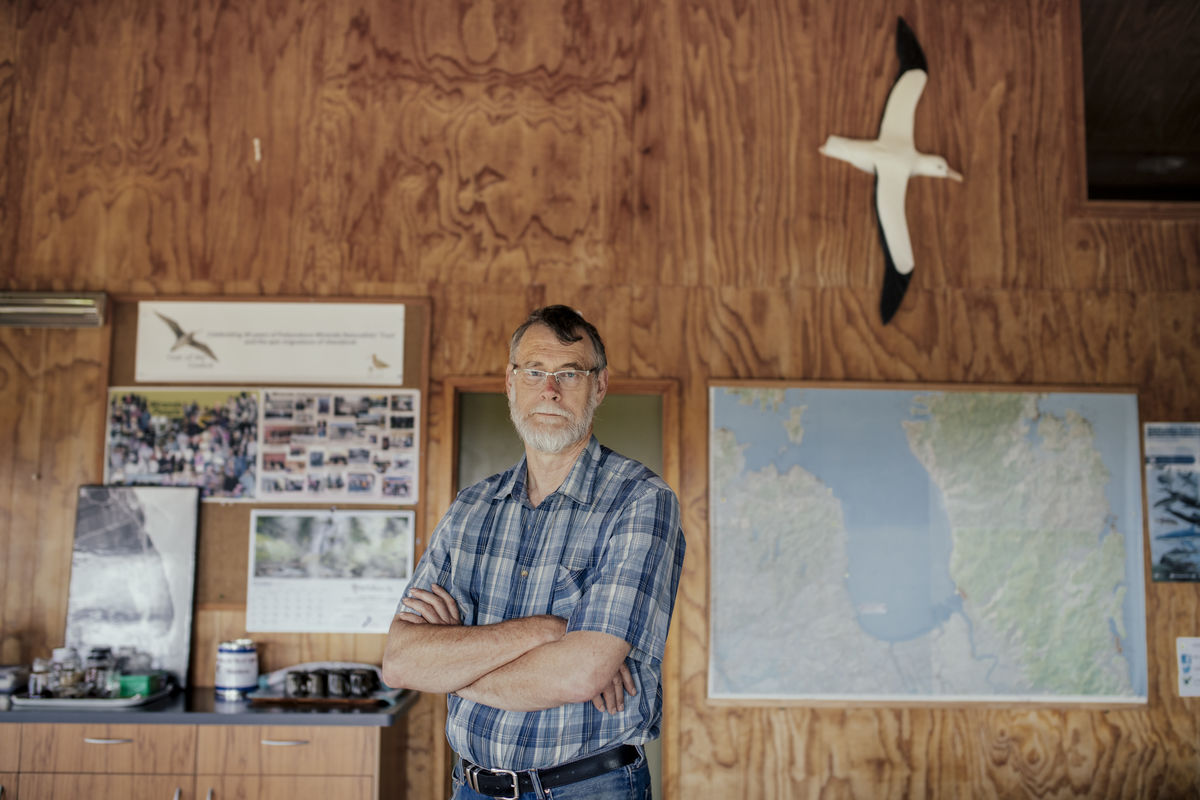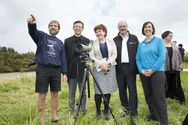
Building international linkages
What is the project about?
The global significance of Pūkorokoro-Miranda as an international feeding ground for migratory seabirds has been a driving factor in Living Water’s decision to work in the area and the basis for many of the projects and trials to improve water quality. The Pūkorokoro-Miranda catchment flows into 8,500 hectares of intertidal wetlands designated of international importance under the RAMSAR Convention on Wetlands. Over 20 species of birds are regularly seen at Pūkorokoro Miranda, including nine Arctic migrants. At least three of our endemic species breed there. In New Zealand’s spring, bar-tailed godwits, red knots and other migratory birds start arriving from as far away as Siberia and Alaska, and leave again in New Zealand’s autumn. At this time, native birds from around New Zealand start arriving - the most numerous are pied oystercatchers and wrybills.
Living Water has collaborated with the Pūkorokoro-Miranda Naturalists’ Trust (PMNT) since 2014 to support their conservation activities and demonstrate to international stakeholders that responsible dairy farming includes connecting ecosystems on a global scale. PMNT has a long association with conservation groups along the East Asian Australasian Flyway and has worked in China and other sites along the flyway since 1999. The vast estuarine mudflats of North Eastern China and the Korean Peninsula are critical stopover points for New Zealand’s international migrant birds like the red knot and the bar-tailed godwit.
How has the project been undertaken?
Living Water provides PMNT with annual funding of $15,000 for surveying and monitoring wading birds’ migration across the East Asian Australasian Flyway (Pūkorokoro-Miranda, North Eastern China, Korean Peninsula). In addition Living Water has consulted and collaborated with Ngāti Paoa, the Chinese Forestry Commission and Nature Conservation Union of Korea.

Keith Woodley
Living Water has recognised the connections that these shorebirds make on their migrations to other parts of the world, particularly in east Asia, especially China, and on to Alaska and Siberia. Healthy mudflats here are part of a network of habitats that enable these shorebirds to sustain these massive migrations. Everything is connected on a global scale.



Read our case study
What has been achieved?
PMNT’s involvement and successful relationship building has been a major contributor to enabling the Department of Conservation (DOC) to progress discussions with Chinese authorities on formal ecosystem protection initiatives. An agreement between DOC and the Chinese Forestry Commission to protect areas of intertidal habitat in North Eastern China was signed at Pūkorokoro Miranda in 2015. China is an important market for Fonterra so there are commercial benefits to further developing the Flyway relationships and the agreement with the Chinese Forestry Commission.
What lessons have been learnt from the project?
Living Water learnt that the story of the bar-tailed godwit’s epic migration to and from Alaska has wide general appeal and can make the story of water quality in rural locations of greater relevance to an urban audience, and encourage both local and international co-operation to protect the migratory birds habitat. Supporting established conservation groups provides opportunities to leverage positive perceptions of how local dairy farmers can improve environmental performance and contribute to habitat health as part of this international conservation effort. An evaluation framework would assist Living Water to better understand and explain the benefits of the project.
Where is more information available?
May 2018: Incredible TVNZ video of Pūkorokoro-Miranda shorebird ecologist trip to North Korea